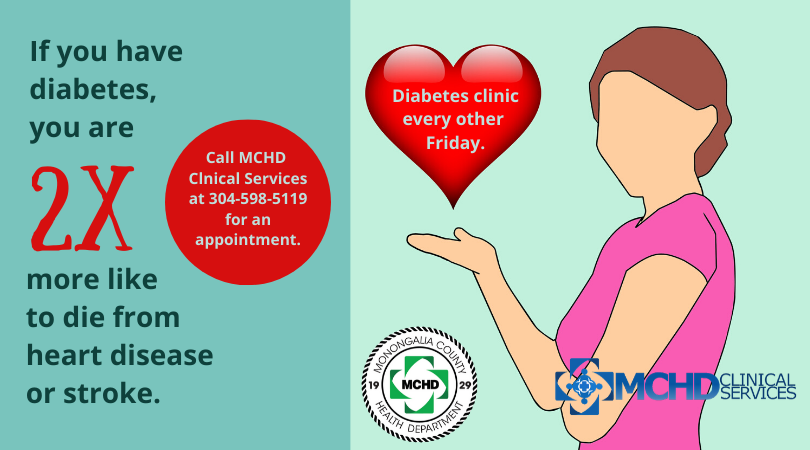Diabetes: The not-so-sweet reality for millions of Americans.

Nov. 6, 2019
By Kenzie Bostick
When most people hear the word “diabetes,” they typically think that it simply means that someone can’t eat a lot of sweets.
While this is true, diabetes can cause a lot of health complications, and affects more than 30 million people in the United States alone.
To raise awareness of the disease and its effects, November is National Diabetes Month.
The Center for Disease Control and Prevention describes diabetes as “a chronic health condition that affects how your body turns food into energy.”
This happens when your body has problems making or using insulin, the hormone that the pancreas releases to let the blood sugar give your cells energy. Without insulin, your blood sugar can get too high, which can cause complications such as heart disease, kidney disease, and vision loss.
According to the CDC, you should be checked for diabetes if you experience the following symptoms: frequent urination, extreme thirst or hunger, losing weight without trying, blurred vision, dry skin that heals slowly, extreme tiredness or numbness or tingling in your hands or feet.
There are three types of diabetes: Type 1, Type 2, and gestational diabetes.
Type 1 diabetes occurs when your immune system mistakenly tells your body not to make insulin. This diagnosis is typically given to children, teens and young adults, and symptoms can develop quickly.
Currently, there is no known way to prevent or cure diabetes, and Type 1 diabetics must take insulin every day. In addition to the symptoms listed above, those with Type 1 diabetes may also experience nausea, vomiting or stomach pains.
Type 2 diabetes is when your body cannot use the insulin it produces to keep blood sugar at a safe level. This is the most common type of diabetes. About 90% of U.S. diabetes diagnoses are Type 2. This type develops over the years, and can have no symptoms. Luckily, you can decrease your chances of developing Type 2 diabetes by eating healthy, losing weight and exercising regularly.
Gestational diabetes occurs only in pregnant women, but typically goes away after the baby is born. The condition usually shows up in the middle of the pregnancy and does not have any symptoms. According to the CDC, having gestational diabetes not only increases the mother’s chances of later developing type 2 diabetes, but also increases the baby’s risk of developing diabetes later in their life.
The remaining 84 million people who are at risk for diabetes but have not yet developed it are facing a condition known as prediabetes. This is when your blood sugar levels are regularly high, but are not quite high enough to be considered Type 2 diabetes. Having prediabetes increases your risk of having a stroke, Type 2 diabetes and heart disease.
MCHD Clinical Services, in a partnership with the WVU School of Nursing, offers a clinic every other week to help people manage their diabetes. The clinic is open from 9 a.m. to 1 p.m. on the first and third Fridays of the month.
Nurse Kendra Barker, DNP, APRN, FNP-BC, can provide testing, insurance navigation, referrals, education and tips. To make an appointment, call 304-598-5119.
Kenzie Bostick is a public information intern office at Monongalia County Health Department.